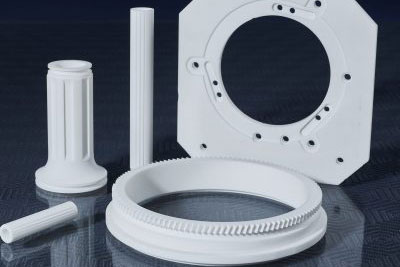





| Name | Cerium(IV) Oxide | Molecular Formula | CeO2 | Molecular Weight | 172.115 | |||
|---|---|---|---|---|---|---|---|---|
| Density | 7.65 g/cm3 | Melting Point | 2400℃ | Boiling Point | 3500℃ | |||
| Solubility | Insoluble in water | Appearance | Light Yellow Powder or White powder | CAS Number | 1306-38-3 | |||
| Storage | Store in a dry place | |||||||
| Main Compositions ≥ % | |||||
|---|---|---|---|---|---|
| Specifications | CeO2-1 | CeO2-2 | CeO2-3 | CeO2-4 | CeO2-5 |
| TREO(wt%) | 99 | 99 | 99 | 99 | 99 |
| CeO2/TREO | 99.5 | 99.9 | 99.95 | 99.99 | 99.999 |
| Cerium Oxide Powder | Designed for a range of uses, from glass polishing to catalysis, and available in various particle sizes and purity levels. |
| Nano Cerium Oxide | Engineered nanoparticles offer enhanced properties due to their nano-scale size, enabling high-performance applications in electronics, catalysis, and biomedicine. |
| Cerium Oxide Polishing Powder | Specially designed for precision polishing of optical components, offering unparalleled surface finish and clarity. |
| Custom Cerium Oxide Solutions | We offer tailored solutions and mixes to meet the specific needs of various industries. |
Packaging: Cerium Oxide (CeO2) is clearly tagged and labeled externally to ensure efficient identification and quality control. Great care is taken to avoid any damage which might be caused during storage or transportation.

It exhibits notable redox behavior, transitioning between Ce³⁺ and Ce⁴⁺ states.

Highly stable at elevated temperatures and resistant to corrosion.

Insoluble in water and weak acids; soluble in strong acids.

Excellent catalytic properties due to its ability to undergo reversible oxidation and reduction, making it effective in facilitating various chemical reactions.

Our products undergo multiple purification processes to meet stringent quality standards, leading to a relative purity of up to 99.999%.
We offer flexibility in meeting your specific requirements. Impurity content, morphology, and particle size distribution can be customized according to your requirements.
Our team consists of experts with extensive knowledge and experience in cerium oxide powder, providing technical support and guidance to help you optimize the use of our products in your specific applications.

With a robust supply chain and production capacity, we ensure reliable and timely delivery of cerium oxide powder to meet your demands consistently.
We strive to offer competitive pricing without compromising on quality. Our efficient production processes and supply chain management help us maintain cost-effectiveness, providing you with value for your investment.
We are committed to environmental sustainability and adhere to eco-friendly practices in our production processes. Our cerium oxide powder is produced with minimal environmental impact, aligning with your sustainability goals.

Widely used as an important catalyst in automotive exhaust treatment, industrial waste gas treatment, and chemical production.

Can be added to glass and ceramics to enhance their wear resistance and strength, and to improve their optical properties.

An excellent dielectric material that can be employed in the manufacture of capacitors and piezoelectric ceramics.

Used in the manufacture of sunscreen, sunglasses, and optical lenses due to its excellent UV-blocking properties.

As an antioxidant in health supplements and medical products, such as vitamin supplements and oral hygiene products.

Used in photocatalytic reactions for applications such as water treatment and air purification.
| Chemical Preparation: |
Cerium oxide is typically synthesized using cerium nitrate as a base, undergoing a series of reactions to produce the final product. The process is as follows:
|
| Hydrothermal Method: |
The hydrothermal method is a commonly used technique for preparing cerium oxide. The specific steps are as follows:
|
| Oxalic Acid Precipitation Method: | Use either cerium chloride or cerium nitrate solution as the base, balance the pH to 2 with oxalic acid, then introduce ammonia water to create cerium oxalate and let it settle. After heating, filtering, rinsing, and drying at 110°C, the cerium oxalate is calcined at a temperature between 900-1000°C to obtain cerium oxide. |
Note: Producing cerium oxide can involve dangerous chemical reactions. It should be done under professional supervision, using proper equipment and safety precautions.
With cutting-edge spectroscopy techniques like X-ray fluorescence (XRF) and inductively coupled plasma (ICP), we analyze the chemical composition of our powders to quantify the concentrations of cerium and any trace impurities.
Advanced methods like laser diffraction and Dynamic Light Scattering (DLS) enable us to accurately determine particle size and distribution, ensuring the powder meets the specified size range.
Measuring bulk density and tap density aids in comprehending the powders' packing characteristics, crucial for their storage and transportation.
Thermogravimetric Analysis (TGA) tracks the weight reduction of the powder during heating, revealing its moisture content and any volatile compounds. This confirms the cerium oxide powder is dry and devoid of undesirable volatile impurities.
The stability and behavior of cerium oxide suspension in different applications can be affected by its pH level. Zeta potential signifies the stability of colloidal dispersions. A high zeta potential value usually implies excellent stability, crucial for suspension-related applications.
Upon successful completion of all tests, each order of powders is certified. An accompanying report details the conducted tests and their results.